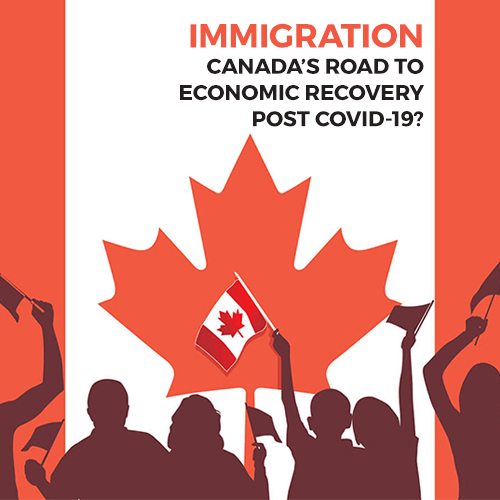
Immigration – Canada’s Road to Economic Recovery Post COVID-19?
The impact of COVID-19 can be felt around the world, especially across the higher education sector. In just a matter of weeks, the pandemic altered how students are educated around the world and education institutes had to come up with alternatives to continue the on-going semesters and adopt new techniques to ensure students progress academically in these extraordinary times. It’s a little too early to comment on how COVID-19 will influence the education sector around the world, but there are signs suggesting that it will have impact on the path of learning innovation and digitization.
Substantial number of Indian students migrate to Canada every year for education and choose from the array of courses that Canadian institutes have to offer. In 2019, 111,244 Indian students received their Canadian student visa and Indian students accounted for 43.3% of all international students in Canada. When we look at the percentage of Indian students in Canada in 2018, which was 37.2%, we may conclude that India is the top source of students for Canadian institutes that seems to grow exponentially year after year. Most of these students post their studies apply for a permanent residency in Canada and settle down in the country, and continue contributing to the economic growth.
Days before announcing travel restrictions and closing borders, Canada disclosed the plan of welcoming over 1 million immigrants between 2020-2022, majorly to support and grow its economy. Little did anyone predict where the global economy would be heading to in the next few weeks. The current situation arises a major question regarding the plan Canadian officials had announced and if they would stick to it now. Students holding valid study permits and offer letters are debating on whether this would be the right time to land in a foreign country and invest heavily in education. Let’s break down the possible outcomes that may occur and why Canada needs immigrants more than it ever did to promote economic growth.
- While the option of enrolling for online classes for the Fall semester remains open in Canadian institutes, the IRCC has declared that this will not affect the eligibility for the Post-Graduation Work Permit Program and students may complete upto 50% of their program while outside Canada if they cannot come to Canada sooner. This opens up possibilities and reassures students planning for the upcoming Fall 2020 semester.
- According to the Conference Board of Canada, one in four people in Canada are anticipated to be 65 or older in 2040, that coupled with a continuing low birth rate, Canada will have no choice but to heavily rely on immigration for its work force and to maintain social infrastructure and growth. Hence, Canada’s desire to welcome over 300,000 immigrants per year is meant to help alleviate its demographic challenges.
- Since the 1990s, immigration has been the vital cause of Canada’s growth in population and will be the only reason till the early 2030s. The major ways of expanding an economy are by adding numbers to the work force and using this force most productively. Population growth is therefore important as it fuels work force growth. In today’s time, immigration tends to account for all of Canada’s work force growth, or the vast majority of it, in a given year and limiting the number of immigrants will be constraining its economic growth potential.
- The state of Canada’s economy prior to the pandemic speaks volumes about what can be expected once the economy is back to normal. Until the wake of coronavirus pandemic, Canada’s unemployment rate was at record lows and its economy enjoyed a decade of growth following the 2008 global financial crisis. Considering that Canada maintained high levels of immigration even following that financial crisis, which in hindsight, was the correct economic decision to make.
- According to the research by Statistics Canada, immigrants have a high propensity to start businesses and created 25 per cent of new private sector jobs between 2003 and 2013. This research forms a significant platform for one to believe that entrepreneurs after the pandemic is over will create businesses and subsequently job opportunities for Canadians. According to the federal government, there are over 600,000 international students in Canada whose contribution to the Canadian economy is over $22 billion which supports nearly 200,000 Canadian jobs.
In conclusion, immigrants play an important role in driving the increasing Canadian population and therefore the economy. In these trying times, Canada needs more immigrants than ever, and would hence look at welcoming students from around the world. And what could be more beneficial than securing your permanent residency by earning a Canadian education?
Ms. Sonali Palkar
Country Lead (Canada) & Sr. Counselor
Imperial Overseas Education Consultants



